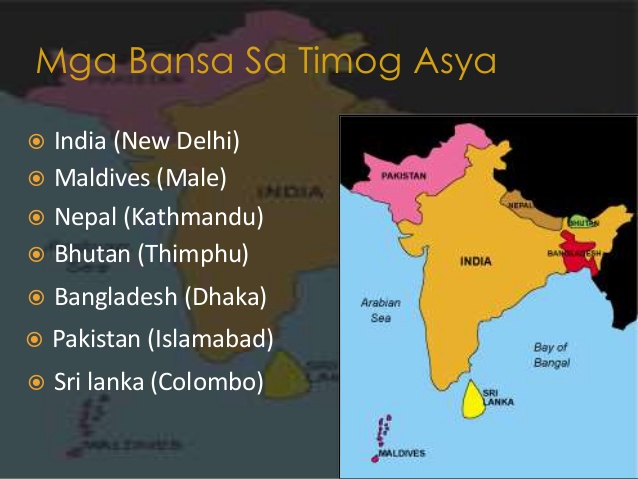Exploring the Nations of Indochina: A Comprehensive Guide
Ever wondered about the vibrant tapestry of Southeast Asia? One fascinating region, steeped in history and cultural richness, is Indochina. This area, a melting pot of influences and traditions, draws travelers and scholars alike. But what countries actually constitute Indochina? Let's delve into this intriguing question and explore the nations that shape this unique corner of the world.
Indochina, a term reflecting the region's historical influences from both India and China, generally encompasses five main countries: Vietnam, Laos, Cambodia, Thailand, and Myanmar (formerly Burma). While the precise definition can vary, these nations share interconnected histories, cultural exchanges, and geographical proximity, forming a distinct subregion within Southeast Asia.
The historical context of Indochina is crucial to understanding its present. The region experienced significant influence from Indian and Chinese civilizations, followed by periods of European colonization, primarily by the French. This colonial legacy has left a lasting impact on the region’s languages, architecture, and political systems. The struggle for independence in the 20th century shaped the political landscape and continues to influence the region today.
The term “Indochina” itself highlights the region’s position as a crossroads of cultures. The Indian influence is evident in religious practices, particularly Buddhism and Hinduism, while Chinese influence can be seen in aspects of language, art, and philosophy. This blending of traditions has created a unique cultural mosaic that distinguishes Indochina from other parts of Southeast Asia.
Understanding which nations comprise Indochina is essential for appreciating the region’s complexity. Each country possesses its own distinct identity, shaped by its unique history, language, and cultural practices. From the bustling streets of Hanoi to the ancient temples of Angkor, Indochina offers a diverse range of experiences for travelers and researchers.
The countries of Indochina hold significant geopolitical importance. Their location in Southeast Asia, bordering major powers like China and India, makes them strategically important. The region has faced challenges, including political instability, economic disparities, and environmental concerns. However, the growing economies and increasing tourism also present opportunities for development and cooperation.
Exploring the benefits of traveling or studying the Indochina region reveals a wealth of possibilities. Firstly, immersing oneself in the diverse cultures offers a profound educational experience. Secondly, the natural beauty of the region, from the Mekong River to the pristine beaches, provides incredible opportunities for adventure and relaxation. Thirdly, the region's developing economies offer unique insights into the dynamics of globalization and international development.
Planning a trip to Indochina requires careful consideration of visa requirements, transportation options, and local customs. Researching each country's specific regulations and cultural norms is crucial for a smooth and respectful travel experience. Engaging with local communities, learning basic phrases in the local languages, and respecting religious traditions can greatly enhance one’s journey.
Advantages and Disadvantages of Focusing on Indochina as a Region
| Advantages | Disadvantages |
|---|---|
| Rich cultural diversity | Potential for political instability |
| Stunning natural landscapes | Economic disparities within the region |
| Growing economic opportunities | Environmental challenges, such as deforestation |
Frequently Asked Questions:
1. What is the origin of the term “Indochina”? (Answer: It reflects the historical influence of India and China.)
2. What are the main religions practiced in Indochina? (Answer: Buddhism, Hinduism, and other indigenous beliefs.)
3. What is the significance of the Mekong River? (Answer: It is a vital waterway for transportation, agriculture, and livelihoods.)
4. What are some of the major challenges facing the region? (Answer: Poverty, political instability, and environmental degradation.)
5. What are some popular tourist destinations in Indochina? (Answer: Angkor Wat, Ha Long Bay, Luang Prabang.)
6. What are the primary languages spoken in Indochina? (Answer: Vietnamese, Khmer, Lao, Thai, Burmese.)
7. What is the role of ASEAN in Indochina? (Answer: Promoting regional cooperation and integration.)
8. How can I learn more about the history of Indochina? (Answer: Through books, documentaries, and academic resources.)
Tips for exploring Indochina: Learn a few basic phrases in the local languages. Be respectful of local customs and traditions. Engage with local communities and support local businesses.
In conclusion, understanding the countries that constitute Indochina – Vietnam, Laos, Cambodia, Thailand, and Myanmar – is key to appreciating the region's rich history, diverse cultures, and complex present. From its ancient temples and bustling cities to its stunning natural landscapes and developing economies, Indochina offers a wealth of opportunities for exploration and discovery. By learning about the region’s past, engaging with its present, and contributing to its future, we can foster a deeper understanding and appreciation for this dynamic corner of the world. So, start planning your journey and delve into the fascinating world of Indochina!
The cryogenic secrets of cream cheese a shelf life deep dive
Ncaa bracket challenge online your guide to march madness glory
Itchy bumps on arms causes relief and solutions












